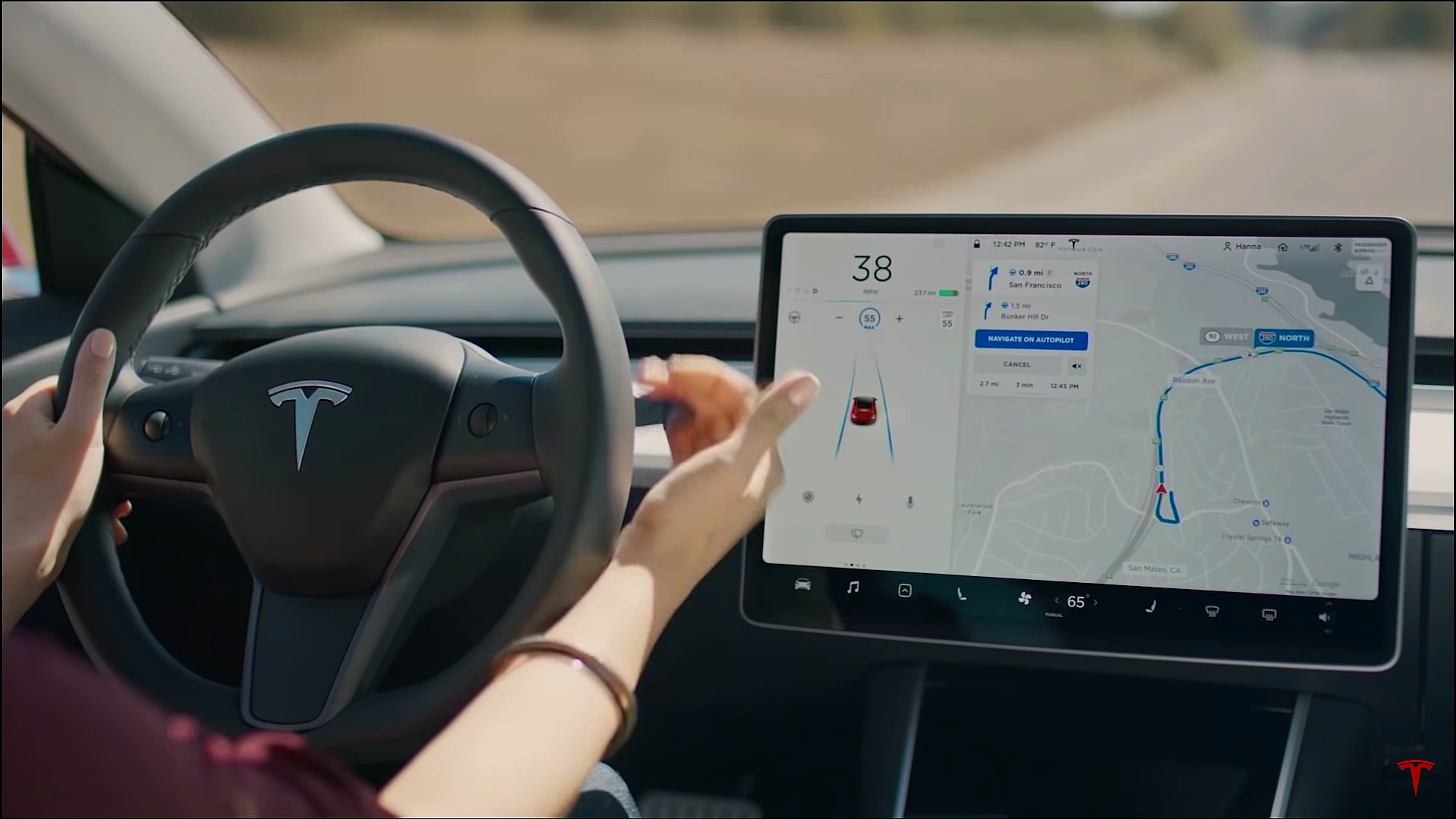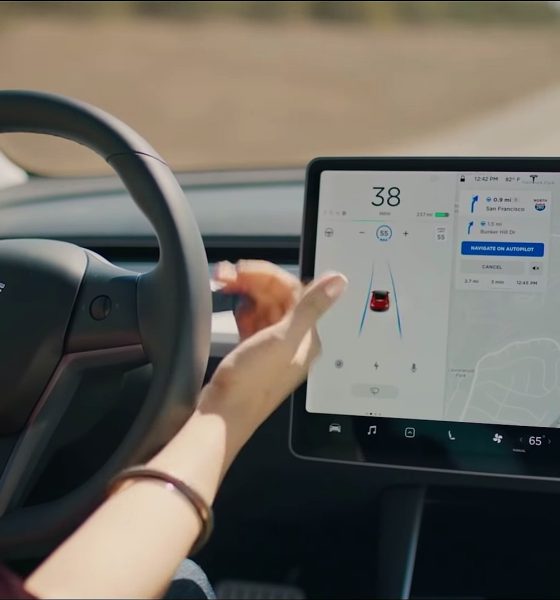

News
Tesla has ‘no chance’ to achieve Full Self-Driving next year, claims Zoox co-founder
Tesla’s Full Self-Driving initiatives recently received a stern dismissal from Zoox co-founder and CTO Jesse Levinson, who stated during a recent conference that the Elon Musk-led electric car maker has “no chance” to fully develop autonomous driving technology in 2020. The comments come amidst Tesla’s efforts to roll out functions of its Full Self-Driving suite, which Elon Musk expects will be “feature complete” in the near future.
Zoox is a self-driving car startup that is aimed at developing autonomous vehicles that are specifically designed for ride-hailing. This makes the company notably different compared to Tesla, which is planning a ride-hailing service while producing electric cars for individual ownership. Zoox’s approach to achieve full self-driving is also different from the Silicon Valley-based carmaker, with the company using a unique LiDAR setup that involves placing four individual units on each corner of its full self-driving vehicle.
While speaking at Business Insider‘s IGNITION: Transportation event in San Francisco Tuesday, Levinson stated that the existing technology to truly achieve autonomous driving simply does not exist today. The components will eventually be ready, according to the CTO, but the necessary parts for a full self-driving setup are still being developed. Thus, when asked if he believes Tesla will have a chance to achieve Elon Musk’s goal of attaining autonomous driving in 2020, Levinson had a simple answer: “No.”
Explaining his response, Levinson stated that Tesla’s electric cars don’t have enough sensors or computers to achieve full self-driving. While the Zoox co-founder maintained that he believes Tesla’s vehicles are “great” and that the company’s Autopilot system is second to none on the freeway, he nevertheless thinks that autonomous driving is still far away for the electric car maker.
“They don’t have enough sensors or computers to do that given any remotely known technology that exists that humans have ever created. And by the way they’re great cars, the Tesla Autopilot system on the freeway is I think the best out there … I think if Musk focused on that aspect it would be better received,” he said.
In a way, it appears that Levinson’s statements may be coming from the fact that he and Tesla CEO Elon Musk are using two very different approaches for autonomous driving, as well as a lack of updates regarding the Silicon Valley-based carmaker’s autonomous driving initiatives. While Zoox has innovated by using conventional sensors for its vehicles, for example, Tesla has gone ahead and pursued FSD with just a custom computer, a neural network, and a suite of cameras, radar, and ultrasonic sensors.
Apart from this, Elon Musk has also been very dismissive of LiDAR, stating that the use of the component is a “fool’s errand” and that any company using the technology for autonomous driving is “doomed.” Tesla’s Hardware 3 computer, unveiled earlier this year and now being retrofitted to the first batches of vehicles, was also created and designed to have enough computing power to facilitate the implementation of fully-autonomous driving systems.

News
Tesla FSD fleet is nearing 7 billion total miles, including 2.5 billion city miles
As can be seen on Tesla’s official FSD webpage, vehicles equipped with the system have now navigated over 6.99 billion miles.

Tesla’s Full Self-Driving (Supervised) fleet is closing in on almost 7 billion total miles driven, as per data posted by the company on its official FSD webpage.
These figures hint at the massive scale of data fueling Tesla’s rapid FSD improvements, which have been quite notable as of late.
FSD mileage milestones
As can be seen on Tesla’s official FSD webpage, vehicles equipped with the system have now navigated over 6.99 billion miles. Tesla owner and avid FSD tester Whole Mars Catalog also shared a screenshot indicating that from the nearly 7 billion miles traveled by the FSD fleet, more than 2.5 billion miles were driven inside cities.
City miles are particularly valuable for complex urban scenarios like unprotected turns, pedestrian interactions, and traffic lights. This is also the difference-maker for FSD, as only complex solutions, such as Waymo’s self-driving taxis, operate similarly on inner-city streets. And even then, incidents such as the San Francisco blackouts have proven challenging for sensor-rich vehicles like Waymos.
Tesla’s data edge
Tesla has a number of advantages in the autonomous vehicle sector, one of which is the size of its fleet and the number of vehicles training FSD on real-world roads. Tesla’s nearly 7 billion FSD miles then allow the company to roll out updates that make its vehicles behave like they are being driven by experienced drivers, even if they are operating on their own.
So notable are Tesla’s improvements to FSD that NVIDIA Director of Robotics Jim Fan, after experiencing FSD v14, noted that the system is the first AI that passes what he described as a “Physical Turing Test.”
“Despite knowing exactly how robot learning works, I still find it magical watching the steering wheel turn by itself. First it feels surreal, next it becomes routine. Then, like the smartphone, taking it away actively hurts. This is how humanity gets rewired and glued to god-like technologies,” Fan wrote in a post on X.
News
Tesla starts showing how FSD will change lives in Europe
Local officials tested the system on narrow country roads and were impressed by FSD’s smooth, human-like driving, with some calling the service a game-changer for everyday life in areas that are far from urban centers.

Tesla has launched Europe’s first public shuttle service using Full Self-Driving (Supervised) in the rural Eifelkreis Bitburg-Prüm region of Germany, demonstrating how the technology can restore independence and mobility for people who struggle with limited transport options.
Local officials tested the system on narrow country roads and were impressed by FSD’s smooth, human-like driving, with some calling the service a game-changer for everyday life in areas that are far from urban centers.
Officials see real impact on rural residents
Arzfeld Mayor Johannes Kuhl and District Administrator Andreas Kruppert personally tested the Tesla shuttle service. This allowed them to see just how well FSD navigated winding lanes and rural roads confidently. Kruppert said, “Autonomous driving sounds like science fiction to many, but we simply see here that it works totally well in rural regions too.” Kuhl, for his part, also noted that FSD “feels like a very experienced driver.”
The pilot complements the area’s “Citizen Bus” program, which provides on-demand rides for elderly residents who can no longer drive themselves. Tesla Europe shared a video of a demonstration of the service, highlighting how FSD gives people their freedom back, even in places where public transport is not as prevalent.
What the Ministry for Economic Affairs and Transport says
Rhineland-Palatinate’s Minister Daniela Schmitt supported the project, praising the collaboration that made this “first of its kind in Europe” possible. As per the ministry, the rural rollout for the service shows FSD’s potential beyond major cities, and it delivers tangible benefits like grocery runs, doctor visits, and social connections for isolated residents.
“Reliable and flexible mobility is especially vital in rural areas. With the launch of a shuttle service using self-driving vehicles (FSD supervised) by Tesla in the Eifelkreis Bitburg-Prüm, an innovative pilot project is now getting underway that complements local community bus services. It is the first project of its kind in Europe.
“The result is a real gain for rural mobility: greater accessibility, more flexibility and tangible benefits for everyday life. A strong signal for innovation, cooperation and future-oriented mobility beyond urban centers,” the ministry wrote in a LinkedIn post.
News
Tesla China quietly posts Robotaxi-related job listing
Tesla China is currently seeking a Low Voltage Electrical Engineer to work on circuit board design for the company’s autonomous vehicles.

Tesla has posted a new job listing in Shanghai explicitly tied to its Robotaxi program, fueling speculation that the company is preparing to launch its dedicated autonomous ride-hailing service in China.
As noted in the listing, Tesla China is currently seeking a Low Voltage Electrical Engineer to work on circuit board design for the company’s autonomous vehicles.
Robotaxi-specific role
The listing, which was shared on social media platform X by industry watcher @tslaming, suggested that Tesla China is looking to fill the role urgently. The job listing itself specifically mentions that the person hired for the role will be working on the Low Voltage Hardware team, which would design the circuit boards that would serve as the nervous system of the Robotaxi.
Key tasks for the role, as indicated in the job listing, include collaboration with PCB layout, firmware, mechanical, program management, and validation teams, among other responsibilities. The role is based in Shanghai.
China Robotaxi launch
China represents a massive potential market for robotaxis, with its dense urban centers and supportive policies in select cities. Tesla has limited permission to roll out FSD in the country, though despite this, its vehicles have been hailed as among the best in the market when it comes to autonomous features. So far, at least, it appears that China supports Tesla’s FSD and Robotaxi rollout.
This was hinted at in November, when Tesla brought the Cybercab to the 8th China International Import Expo (CIIE) in Shanghai, marking the first time that the autonomous two-seater was brought to the Asia-Pacific region. The vehicle, despite not having a release date in China, received a significant amount of interest among the event’s attendees.








